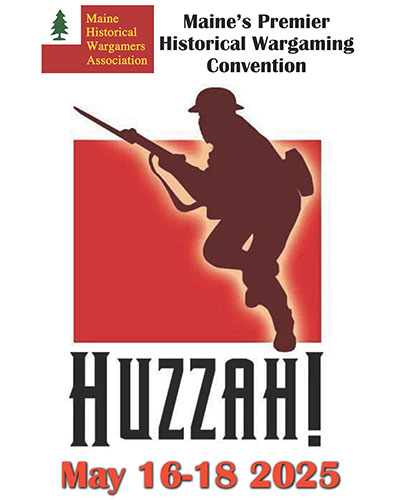
Avalon Hill, official maker of the War at Sea game under the Wizards of the Coast label has released a 3 page set of rules clarifications. We have made them available at https://wargamingforums.com/downloads/War_at_Sea_Clarifications.pdf (the pdf requires the FREE Adobe Acrobat Reader to view the file. You can get Acrobat Reader for FREE HERE).
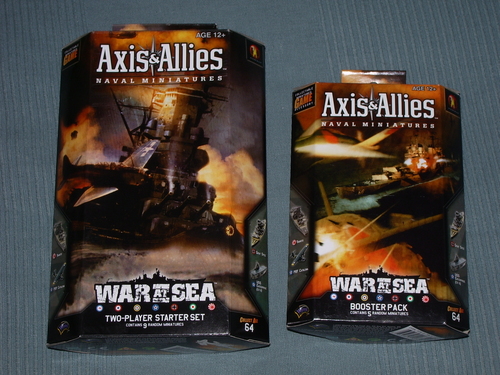 The rules clarifications are relatively new and feature a couple vital changes. The main area of importance concerns aircraft. Updates to rules concerning aircraft appear on page 1 (Sequence of Play: C. Air Mission Phase), page 2 (H. Air Return Phase, Movement and Position: Stacking, Aircraft and Airbases: Carriers) and page 3 (Effects of Damage: Aborted, Special Abilities: Draw the CAP, Special Abilities: Lay Smoke Screen).
The rules clarifications are relatively new and feature a couple vital changes. The main area of importance concerns aircraft. Updates to rules concerning aircraft appear on page 1 (Sequence of Play: C. Air Mission Phase), page 2 (H. Air Return Phase, Movement and Position: Stacking, Aircraft and Airbases: Carriers) and page 3 (Effects of Damage: Aborted, Special Abilities: Draw the CAP, Special Abilities: Lay Smoke Screen).
As you can see that is a lot of ink devoted to planes and rightly so. Aircraft are a powerhouse in the game and it is important to do it right to avoid turning aircraft into a more powerful force than they already are (more on rules clarifications for aircraft at the bottom of this article).
The other vital changes can be found on page 1, 2, and 3. Page 1 features “How to Win” in which we learn that a player wins only at the end of the turn. The War @ Sea group at Battleground Games, in Abington, have been playing both ways.
In early games we had declared victory as soon as 150pts were reached (unless it was a scenario with different victory conditions). More recently, we’ve been holding off the victory until the end of the turn. This is important because it gives the opponent a chance to cause a stalemate, contest the victory (that last objective counter), or try one last and perhaps desperate assault.
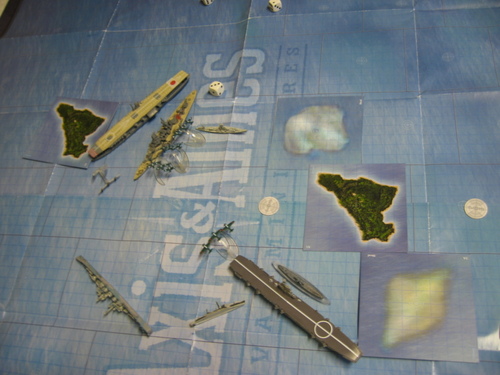 Page 2 contains “Line of Sight” in the “Attack and Defense” section. This is vital when coupled with the No Sea Control special ability (as clarified on page 3) and playing on maps 1-3, 4, and 6. Each of those maps features a landmass right next to objective tokens. It is possible for the Axis (Italians) or Allies (USA) to use shallow craft such as the Motor Torpedo Boats (Italians) or PT Boats (USA) to prevent their opponent from taking the adjacent objective token.
Page 2 contains “Line of Sight” in the “Attack and Defense” section. This is vital when coupled with the No Sea Control special ability (as clarified on page 3) and playing on maps 1-3, 4, and 6. Each of those maps features a landmass right next to objective tokens. It is possible for the Axis (Italians) or Allies (USA) to use shallow craft such as the Motor Torpedo Boats (Italians) or PT Boats (USA) to prevent their opponent from taking the adjacent objective token.
This technique is dirty, not nice, and exploiting the rule in the worst possible way. I used this method, once, to see if it would in fact work. My experience has shown only one opponent fielding shallow craft, once, and I’ve fielded them once out of a dozen plus games.
It is completely and entirely plausible that a player will move a PT Boat into an island while the Bismarck (or some other ship) sits adjacent and can’t do anything. There are only two ways to deal with this. The first is to destroy the shallow craft with aircraft. The second is to have your own shallow craft move into the sector and attack the shallow vessel.
 The other vital change is under the “Crippled” heading on page 3. The important section says, “A crippled Ship or Submarine rolls one less attack die when making Torpedo attacks, if they have one (to a minimum of one).” Previously, my group, and I’m sure others had too, had been playing in the way that vessels (subs or ships) could actually lose the ability to fire torpedoes when crippled at certain distances.
The other vital change is under the “Crippled” heading on page 3. The important section says, “A crippled Ship or Submarine rolls one less attack die when making Torpedo attacks, if they have one (to a minimum of one).” Previously, my group, and I’m sure others had too, had been playing in the way that vessels (subs or ships) could actually lose the ability to fire torpedoes when crippled at certain distances.
This rule helps maintain the power of U-Boat fleets even when they’re crippled. Imagine a crippled U-Boat still being able to fire 3 dice at a target due to Wolfpack and a Kondor. Not bad for a sub that’s crippled and probably going to sink any moment.
But enough of these secondary clarifications. I’ve kept you waiting long enough to discuss the Aircraft changes. That’s why you’re reading this so let’s get to it.
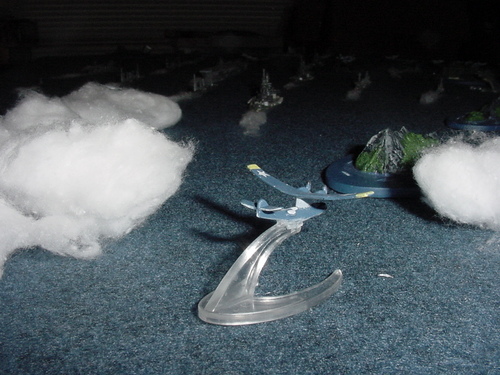
Most of the Air Mission Phase clarifications are the same as in the Advanced Rules book. Perhaps some complaints had been made to WoTC but I believe the rulebook is clear on that segment. The interesting nugget comes in the last two bullets in the list. We learn that all carrier based aircraft MUST participate in an Air Mission and the Air Mission cannot be to stay on the carrier’s flight deck. We can instead assign leftover planes to the land airbase for their Air Mission.
Be sure to read the caveat in the 4th bullet first. The last bullet provides another golden nugget. Any and all aircraft that are assigned to the land airbase, for their Air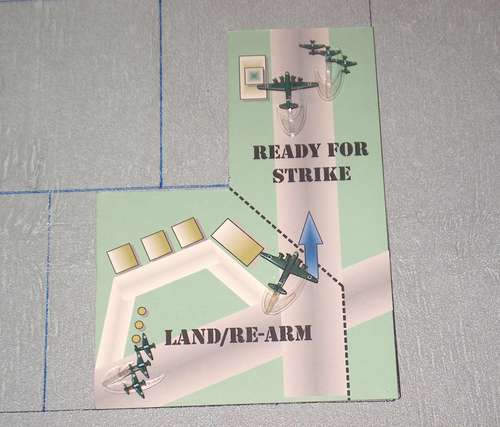 Mission, do NOT get rearming counters and ARE available for missions next turn. This is NICE!
Mission, do NOT get rearming counters and ARE available for missions next turn. This is NICE!
The golden nugget on page 2 concerns Destroyers Carriers. Previously, we had to roll for each carrier based aircraft when the carrier was sunk. Now, we have to roll for each TYPE of aircraft on the carrier. If the carrier has all Fighters (i.e. Wildcats) you roll 1 die for that TYPE of aircraft and if you get a result of 1 then remove one of the aircraft from the game.
I cannot stress enough that this is the interpretation of the group at Battlegrounds. I am not 210% positive that this is the correct interpretation. I believe this clarification can also be interpreted as re-stating, exactly more or less, the Carriers rule on the bottom of page 31 in the Advanced Rules book.
The other clarification at the top of page 2 is mainly procedural. To help keep the logistics of the game intact any aircraft on a carrier need to have their cards physically placed under the card of the carrier. This ensures that everyone knows what planes are on what carrier.
I put the cards for the planes right next to the card for the carrier they’re based on. I doubt anyone will have a problem with you using my method instead of the one in the Rules Clarifications. But, it is important to make sure that it is easy for all players to know what planes are on what ship at all times.
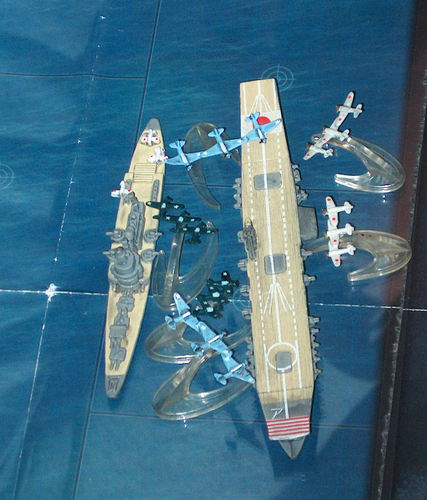 The last important clarification is on page 3 and deals with Aborted planes and the Draw the CAP special ability. The first is that as soon as an aircraft has been aborted it is immune to all further attacks that turn. The aborted plane can still attack during the Air Defense phase but not after that phase.
The last important clarification is on page 3 and deals with Aborted planes and the Draw the CAP special ability. The first is that as soon as an aircraft has been aborted it is immune to all further attacks that turn. The aborted plane can still attack during the Air Defense phase but not after that phase.
Some planes, such as the TBD Devastator, have the Draw the CAP special ability. Once that ability is activated all enemy planes must attack the aircraft that is using Draw the CAP. Once the aircraft (with that ability) is destroyed or aborted the restriction is removed.
Basically, “as soon as a destroyed or aborted counter is placed on this Aircraft” the enemy fighters can attack other planes in that sector as they normally would.
The key to the clarification on Draw the CAP is the ability’s limited nature. This is important as it allows opponents a chance to take out other planes in the sector.
Be sure to read, print out, and share the Rules Clarifications. In case you forgot the URL we have made the clarifications available at https://wargamingforums.com/downloads/War_at_Sea_Clarifications.pdf (the pdf requires the FREE Adobe Acrobat Reader to view the file. You can get Acrobat Reader for FREE HERE).


